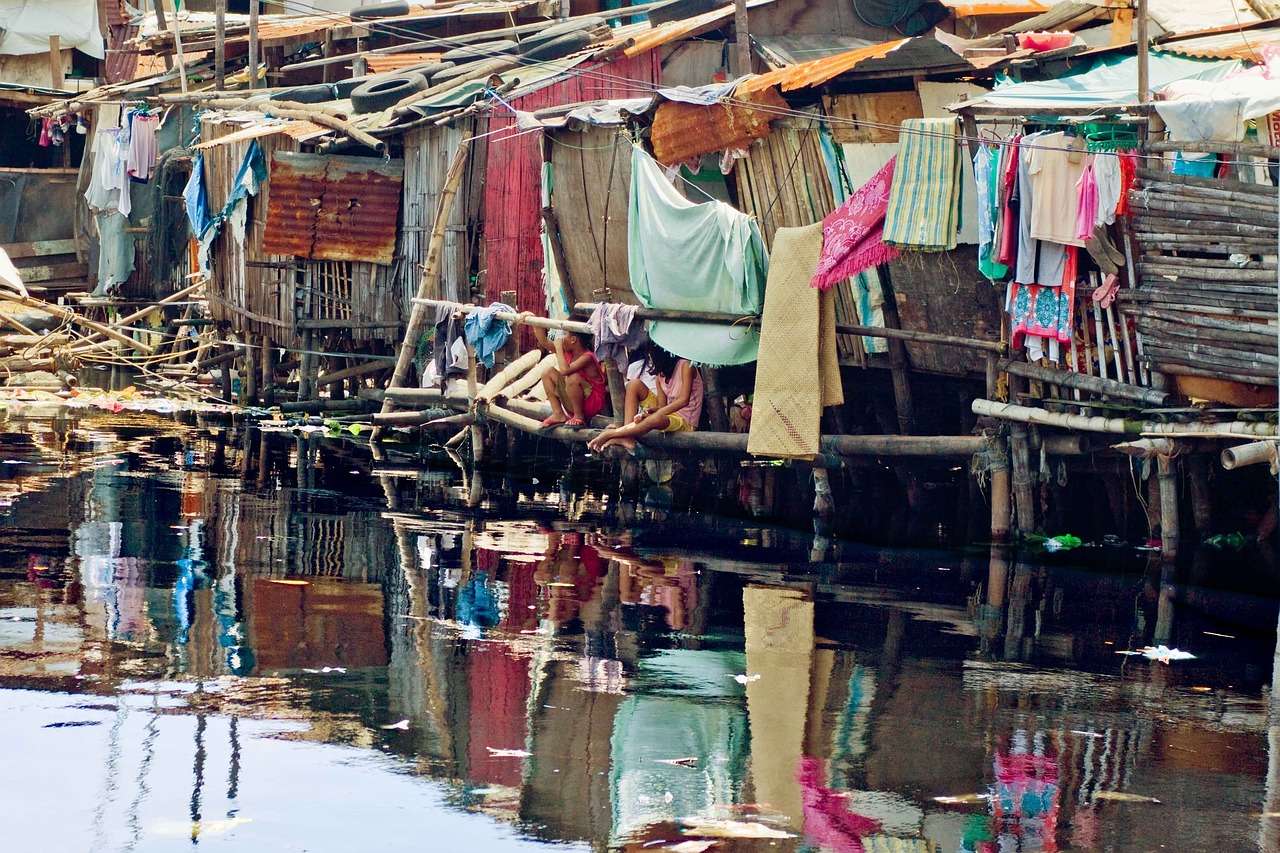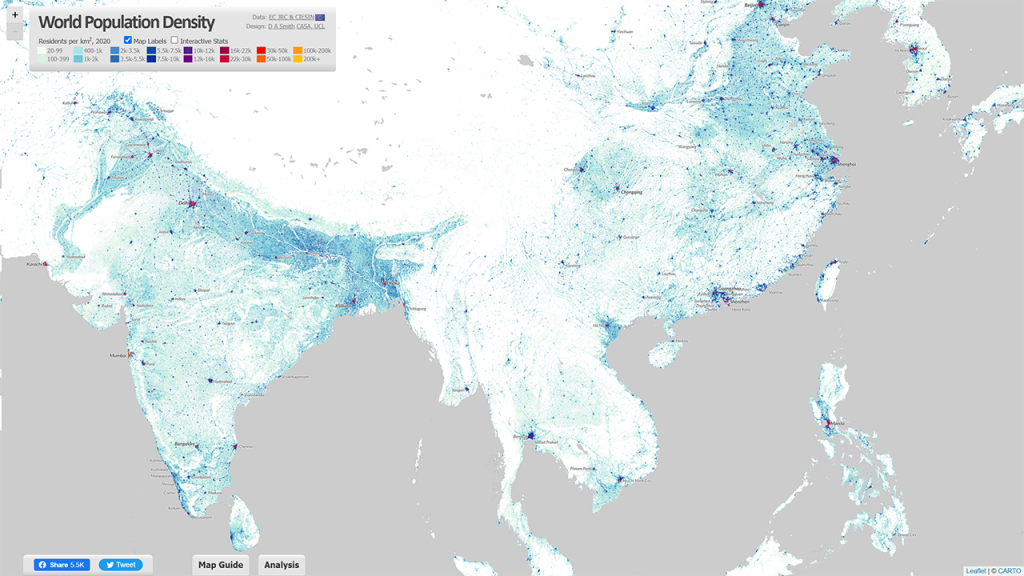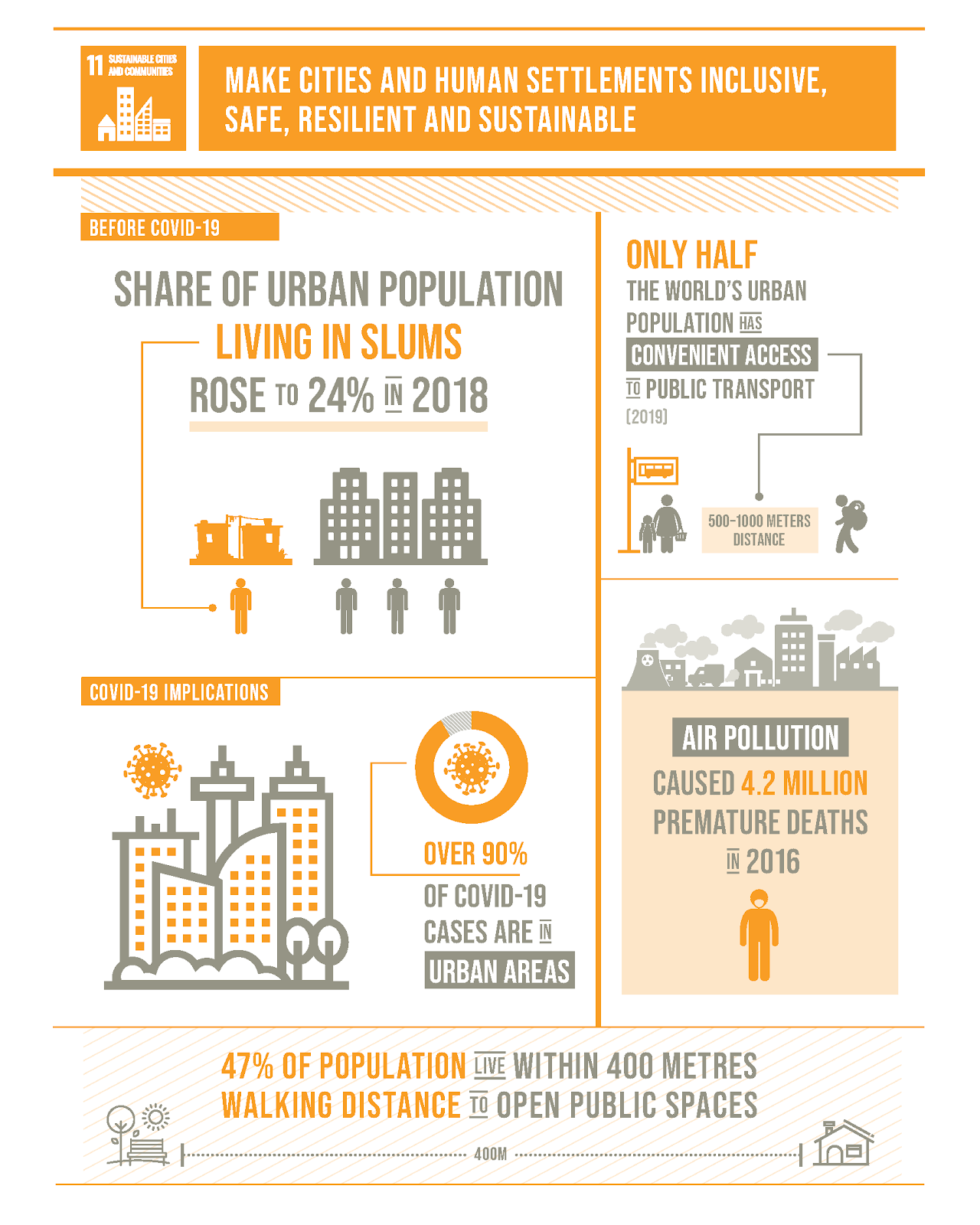Currently, 4.3 billion people, or 55% of the global population, reside in cities. By 2050, this is expected to increase to 80% (World Economic Forum, 2022). Although people who live in cities typically have a higher quality of life, many developing countries have sizable slums where people are essentially cut off from resources, employment opportunities, and government services (Buhaug, 2012). Conversely, rapid urbanisation has also caused serious detrimental effects on the environment, and the world’s most overpopulated cities are struggling significantly.

Source: Pixabay
The Environmental Impact of Overpopulated Cities
It is estimated that cities are responsible for 75% of greenhouse gas emissions, mostly from buildings. Accordingly, the development of cities enabled the destruction of biodiversity, as well as air and water pollution. City expansion forces animals out of their habitats. Eutrophication, or the rise in chemical nutrients in water resources, is a result of the urban production of contaminants that seep into water sources. Another key point is that this degrades the water quality and disrupts marine ecosystems.
Furthermore, the growth of urbanisation also puts immense pressure on global material consumption. The 41.1 billion tonnes of material consumption in 2010 will rise to about 89 billion tonnes by 2050. Likewise, cities cover only 2% of our land surface but consume over 75% of material resources (World Economic Forum, 2022). NASA researchers measured air pollution‘s dependence on population in four major air pollution regions: the US, Europe, China, and India. They found that surface-level nitrogen dioxide (NO2), an indicator of urban air quality, doubled with population growth.
The Social Impact of Overpopulated Cities
Unfortunately, poverty and inequality are pervasive in cities, particularly in developing countries. Slums and informal settlements are the most visible physical manifestations of this issue, where access to essential services remains elusive. In developed countries, minority groups face marginalisation and underinvestment in infrastructure (UN Habitat, 2022).
Sub-Saharan Africa has the highest proportion of slum inhabitants, with over 50% of its urban population living in slums. According to empirical data, a 1% rise in urban population growth will result in a 2.3% and a 5.3% increase in the prevalence of slums in Africa and Asia, respectively. In 2020, an estimated 1 billion people, or 1 in 4 urban settlers, live in slums (United Nations Statistics Division, 2022).
“The reasons behind slum formation in developing regions are many: rapid urbanisation; ineffective planning; lack of affordable housing options for low-income households; dysfunctional urban, land and housing policies; a dearth of housing finance; and poverty.”
United Nations Statistics Division, 2022
What is Overpopulation in Cities?
Factors Contributing to Overpopulation
Human overpopulation happens when the population of a region is greater than its carrying capacity – the ability to support and sustain the said population (Sayre, 2007). Cafaro et al. (2022) stipulate that overpopulation is prevalent where:
- Wild nature is severely displaced, resulting in the extinction of several species;
- Ecosystems are degraded, where future generations will likely struggle to live decent lives
- One or both of these catastrophes cannot be avoided without reducing the human population.
Based on these criteria, it is argued that the majority of countries, (and the world as a whole) are already overpopulated (Lianos and Pseiridis, 2016; Tucker, 2019, as cited by Cafaro et al. (2022). Every year, the world’s population and per capita consumption increase. In almost all cases, per capita consumption grows faster than population decline. This leads to increasing environmental impacts even in stable or declining populations (O’Neil et al. 2018).
Moreover, factors contributing to human overpopulation are increasing birth rates, lower mortality rates, immigration, volatile biodiversity and depleted natural resources (Leadley, 2010 as cited by Obaisi, 2017). Today, cities are where the majority of the population resides. Rural-to-urban migration will mainly drive rapid urbanisation growth. Conversely, this will be prevalent in the nations most impacted by climate change (Buhaug et al., 2012). The idea that expanding urban population pressure causes increased social disorder receives little evidence from research. Rather, the main causes are the lack of reliable governance and persistent civil conflict. (Buhaug et al., 2012).
Future Trends In The World’s Most Overpopulated Cities
Unfortunately, high urban densities are more common in the Global South. These are especially common in countries with weaker transportation infrastructure that rely heavily on urban housing (CityGeographics, 2023). Conversely, the interactive World Population Density Map developed by CityGeographics incorporates the 2023 update of the Global Human Settlement Layer (GHSL) data. The GHSL method generally emphasises large continuous city regions.

Source: CityGeographics
South Asia and Africa house the world’s densest cities that are above 40,000 pp/km2, such as Mumbai, Dhaka, Cairo, and Kinshasa. These are the top twenty city regions in the world and their population-weighted density.

Source: CityGeographics
The UN predicts that cities in the Global South will have the greatest rate of urban growth. Three countries account for 35 % of the world’s urban population between 2018 and 2050 (United Nations, 2018). These are India, China, and Nigeria with projected additional 416 million, 255 million, and 189 million urban dwellers, respectively.

Source: Statista
Moving Forward
Some researchers advocate for smaller populations (Cafaro et al., 2022). while others argue that this is neither a necessity nor a sufficient solution (Hughes et al., 2022). They argue that solutions must focus on reducing unsustainable consumption and supply chains and ensuring sustainable production. Nonetheless, urban growth is inevitable. Thus, planning is essential for ensuring sustainable futures prior to the expansion of cities (UN Habitat, 2022). By putting this into practice, the adverse social, economic, and environmental effects of future urban growth can be minimised.
The future of cities
Moreover, researchers say that a compact city can be advantageous to human physical health and social relationships. Said cities would address problems related to safety, pollution, and noise. Global and local policies that address environmental, economic, and social issues support compact cities (Lim and Kain, 2016). Generally, compactness provides the potential for lower carbon and closer amenities, whereas urban sprawl is frequently associated with increased car use.
Nonetheless, cities will need to work harder and more effectively as migration increases in order to keep up with population growth. Hence, smart cities
will become the standard across the globe. Policies should support the circular transition of cities and the adoption of low-carbon and resource-efficient systems.
Source: OECD
The IPCC Sixth Assessment Report (2022) provides a roadmap for mitigation strategies depending on current urban features and development: Established cities – The most effective way to reduce their GHG emissions is by replacing, repurposing, or retrofitting buildings, supporting modal shift, electrifying the urban energy grid, and infilling and increasing urban area density.
Rapidly Growing Cities
With new and ongoing infrastructure development, large future emissions can be reduced by urban planning to co-locate employment and housing. Converapidly adopting low-carbon technologies, electrifying all urban services, such as transportation, cooling, heating, cooking, recycling, water extraction, wastewater recycling, and others, can minimise emissions.
New and Emerging Cities
By building compact, co-located, walkable urban areas with mixed land use and transit-oriented development while preserving existing green (land) and blue (water) assets, they have the unique opportunity to become low- or net-zero-emissions metropolitan places.
Why Should We Focus on the World’s Most Overpopulated Cities?
“An increasing share of emissions can be attributed to urban areas (a rise from about 62% to 67–72% of the global share between 2015 and 2020). The drivers of urban GHG emissions are complex and include population size, income, state of urbanisation and urban form.”
International Resource Panel (2018)
Furthermore, it is essential to address overpopulation in urban areas to minimise emissions and mitigate environmental degradation and biodiversity loss. Although research shows that population growth in cities has slowed, it is expected to continue over the next few decades. 68% of the world’s population will live in cities by 2070. This means an increase of 2.2 billion urban residents – mostly in Africa and Asia. Between 2020 and 2070, low-income countries will have a 76% increase in the number of cities. This is in contrast to only 6% in upper-middle-income countries. (UN Habitat, 2022)
achieving the United Nations Sustainable Development Goals (SDGs) and how they link to The World’s Most Overpopulated Cities
Cities provide opportunities for wealth creation and development but also concentrate poverty and inequality in both developing and developed countries. SDG11 pushes for the development of cities and human settlements to become healthy, resilient, and inclusive. COnversely, to achieve this, we must address the overpopulation in urban areas. “Leaving no one behind” requires supporting the 1 billion urban slum dwellers and enabling them to escape poverty. Enhancing human capital in growing cities supports SDG1 and SDG8 (UN Habitat, 2022) to “end poverty in all its forms everywhere” and promote “decent work and economic growth.”
Urban decision-making may simultaneously advance gender equality (SDG5), address poverty (SDG1), and improve health (SDG3). It can also advance access to renewable energy and climate-resilient infrastructure (SDGs 7 and 9) (UN Habitat, 2022).

Source: The York School
A Thrivable Framework
In summary, we inhabit a planet with limited resources, which poses a serious threat to our survival. With the projected global population growth in cities, it is crucial that we make necessary changes in existing consumption and production patterns and support policies and innovations that enable sustainable urban development. THRIVE Framework seeks to predict outcomes of actions long before they take place through a transdisciplinary, holistic model. We use science-based accountability and context-based metrics to have a clear understanding and inform our way forward towards what we call ‘thrivability‘ – an environment that goes above and beyond sustainability.
Finally, the THRIVE Platform is a free public platform that uses machine learning and predictive analytics for visual comparisons of the sustainability performance of entities at several granularity levels, including city, bioregions, and national levels. We recognise that human happiness can sometimes compete with environmental well-being, so we use our ciambella chart to illustrate the ‘thrivable zone’.
The THRIVE Project is an international, non-profit, research and advocacy group that informs the latest knowledge and research on building inclusive and sustainable cities.
